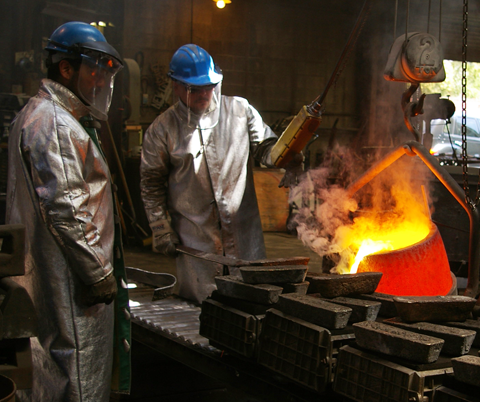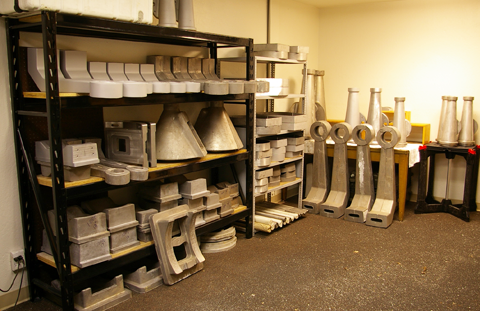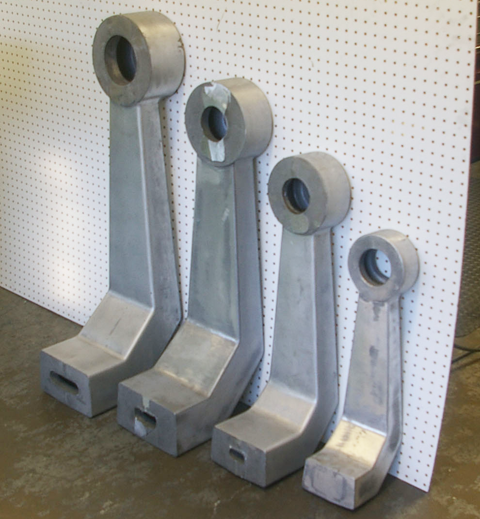
Cast Components
The large exterior components of the MI-500, the MI-750, and MI-1000 telescope mounts are aluminum castings. A metal foundry creates complex metal shapes by pouring molten metal (steel, iron, brass, aluminum, etc.) into hollow molds. The molds are made by burying a wood, wax, or metal pattern into sand, plaster, or other suitable material. After the pattern is removed, molten metal is poured into the cavity. When the metal cools, the rigid casting assumes the shape of the original pattern.

Sand castings have been made for well over 6,000 years. The tricks and techniques of the foundry worker are ancient, yet today castings are found everywhere in modern life. The engine block in the car you drive is likely an aluminum or iron casting. The often heard complaint "They don't make things the way they used to" usually refers to the fact that many products, once made with strong metal castings, are today made with molded plastic.
The MI family of telescope mounts uses dozens of individual patterns to produce the necessary metal components. Each pattern is made using modern machine tools, resulting in castings that are accurate and uniform.
A common approach in telescope design is to machine all the necessary parts from extruded tubes, plates, and bars of aluminum. The parts are then assembled with fasteners to create a complete instrument. Extruded aluminum has a tensile strength that is about 20% greater than heat treated cast aluminum. Fabricated mounts are usually rigid and relatively lightweight.
However, telescope mounts fabricated entirely from extruded aluminum are limited in design flexibility. The mount must be some combination of cylinders, boxes, and plates. Just on aesthetic grounds, the capability of castings and molds to produce shapes of any complexity results in a more visually appealing design.

The small strength advantage of extruded metal can not match heat treated castings with critical cross sections that are 2 to 4 times thicker than equivalent fabricated metal parts. These thick cross sections produce rather heavy components, so the MI family of mounts is intended primarily for observatory installations.
A properly designed pattern allows one to efficiently produce complex parts with the metal distributed in an optimum way. The MI-500 polar cone has a wall thickness of varying thickness with internal gussets. The structural areas have a very large cross section of metal.
Newly cast parts are heat treated by placing them in an industrial oven at 400 degrees for about 12 hours. The parts are allowed to cool slowly after which they are more stable and markedly stronger. Our 356-T6 heat treated castings are then put in storage for three to six months where they age. This further increases the strength of the castings and improves the machining properties. This process, in particular, benefits our larger castings, including fork arms, declination assemblies, and polar cones.

Our various mounts are very simllar in appearance. This is because the patterns from which they are made were mostly scaled using the original MI-500 mount. A recent addition to our fork family is the MI-1250 fork, intended for use with 24-inch telescopes. This large fork arm was designed by scaling the MI-750 fork pattern by a factor of 1.5. Similarly, the MI-1000 declination assembly is a copy of the MI-500 scaled by 1.6.
These cast parts are the basic components of our telescope mounts. Each component must be accurately machined, finished, and painted before final assembly.